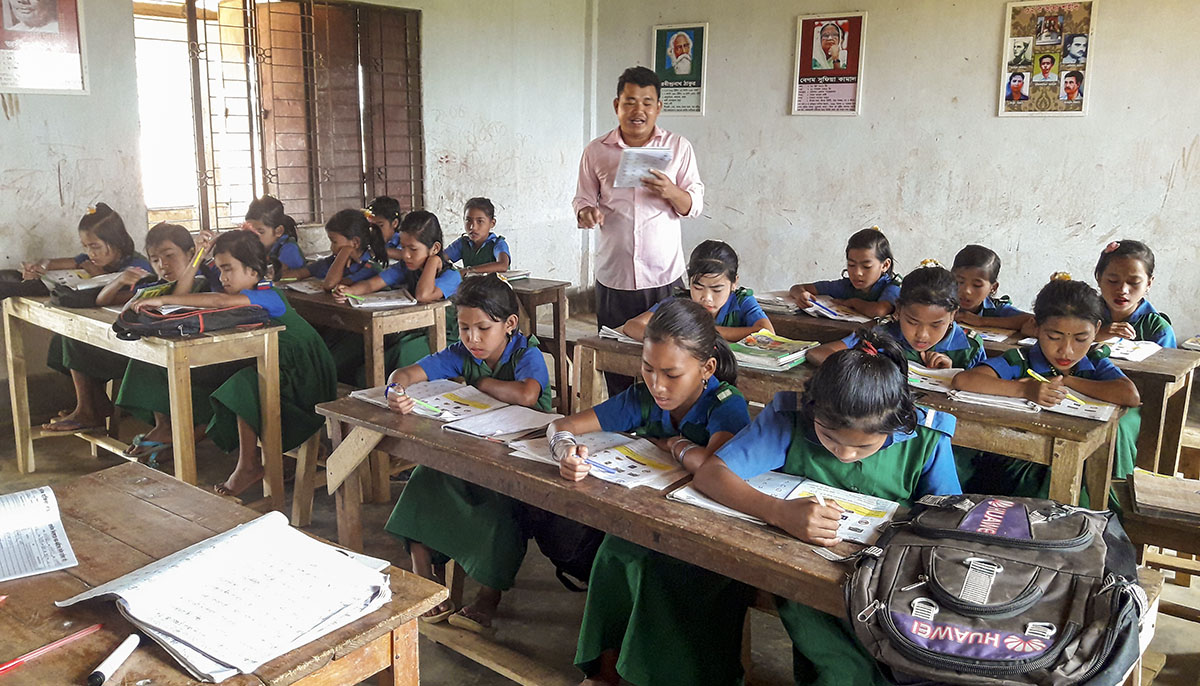What does the Buddha give people? Whatever they need.
If people need peace of mind, he gives them meditation. If they need liberation, he gives them the path to enlightenment. And if what they need is food and shelter, he gives them, well, food and shelter.
At many Buddhist centers in the West, the main focus is on offering people meditation instruction and Buddhist teachings. The idea is that if we’re looking for an end to suffering, this is the ultimate answer. Running a soup kitchen or some other form of charity work would just offer people temporary relief.
The problem is that this only gives certain people what they need—the privileged ones who don’t have to worry about feeding their family and have the luxury to focus on their own spiritual development. People suffering real hardship have more pressing priorities than meditating, and the Buddha cares about them too. If what they need now is food and shelter, he gives it to them.
That’s the view of three Buddhist organizations that see humanitarian work as an essential expression of their Buddhist values and put it at the center of their mission.
Taiwanese Buddhist nun Cheng Yen woke up to the devastating impact of poverty in 1966 when, in a small hospital in Taiwan, she saw a woman who suffered a miscarriage being forced to return to her mountain village because she couldn’t pay for medical treatment. The woman later died from complications.
After witnessing this, Cheng Yen established the Tzu Chi Foundation. Now, it’s the world’s largest Buddhist charity, with more than ten million members in forty-seven countries, and it’s well-known for its focus on disaster relief and humanitarian aid.
Cheng Yen started Tzu Chi as a grassroots project with thirty of her female followers. Each woman agreed to save fifty cents from her grocery money every day, keeping the funds in homemade bamboo savings banks. In the first year, Cheng Yen and her community raised enough to help fifteen families in east Taiwan. From there, Tzu Chi grew as more people decided they too could put away a small amount daily to help someone in need. By 1970, the organization began offering medical aid, eventually opening hospitals in cities and townships throughout Taiwan.
The words “tzu” and “chi” are Chinese for “compassion” and “relief.” Han Huang, CEO of Tzu Chi Foundation, says that when volunteers help others they experience and understand the true definition of compassion. “They care about people they don’t even know,” he says. “There are many different ways to practice Buddhism, but dharma master Cheng Yen believes that you have to talk the talk and walk the walk. The way she does this and how she has taught us to do this is through providing compassion and relief.”
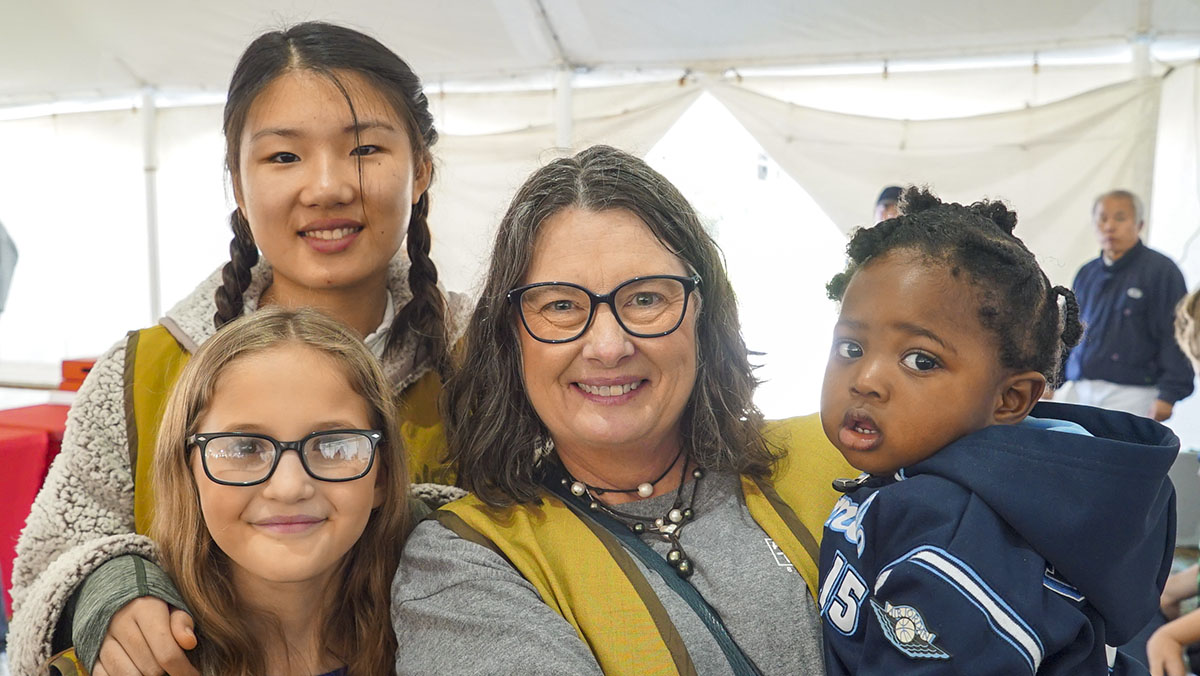
In 1989, when a young American businessman, Stephen Huang, paid a visit to Cheng Yen to seek personal guidance, he was impressed by what she and her community had so far accomplished with Tzu Chi. Huang decided to bring the spirit of this organization to the West, and with him spearheading the effort, Tzu Chi’s first international chapter was established in California as Tzu Chi USA. It has since expanded throughout the United States.
Tzu Chi USA focuses on several areas of humanitarian aid: education, medicine, culture, disaster relief, and environmental protection. In 2012, Tzu Chi USA received the Champions of Change award from the White House after distributing ten million dollars in immediate relief to the victims of Hurricane Sandy. More recently, volunteers provided relief to victims of Hurricane Harvey, Hurricane Irma, and the wildfires in California. In 2017, Tzu Chi USA gave out thousands of eco-friendly blankets, tons of rice, and hot meals, serving almost seventeen thousand families.
Tzu Chi USA also organizes clinics to provide low-income and vulnerable communities with medical, dental, and health services. Han Huang is especially proud of Tzu Chi’s See to Succeed Program, whereby two buses outfitted as mobile vision stations visit communities throughout the U.S. where a significant percentage of residents do not have coverage for vision care.
“I think that our mobile stations encapsulate what we do,” Huang says. “We know that people who need help often cannot reach us, so we reach out to them.”
Cheng Yen’s hope for the foundation has always been not only to “help the poor,” but also to “educate the rich.” It’s a mission that inspires love and humanity in both the receiver and the giver. “The volunteer spirit is the Tzu Chi spirit,” Huang says.
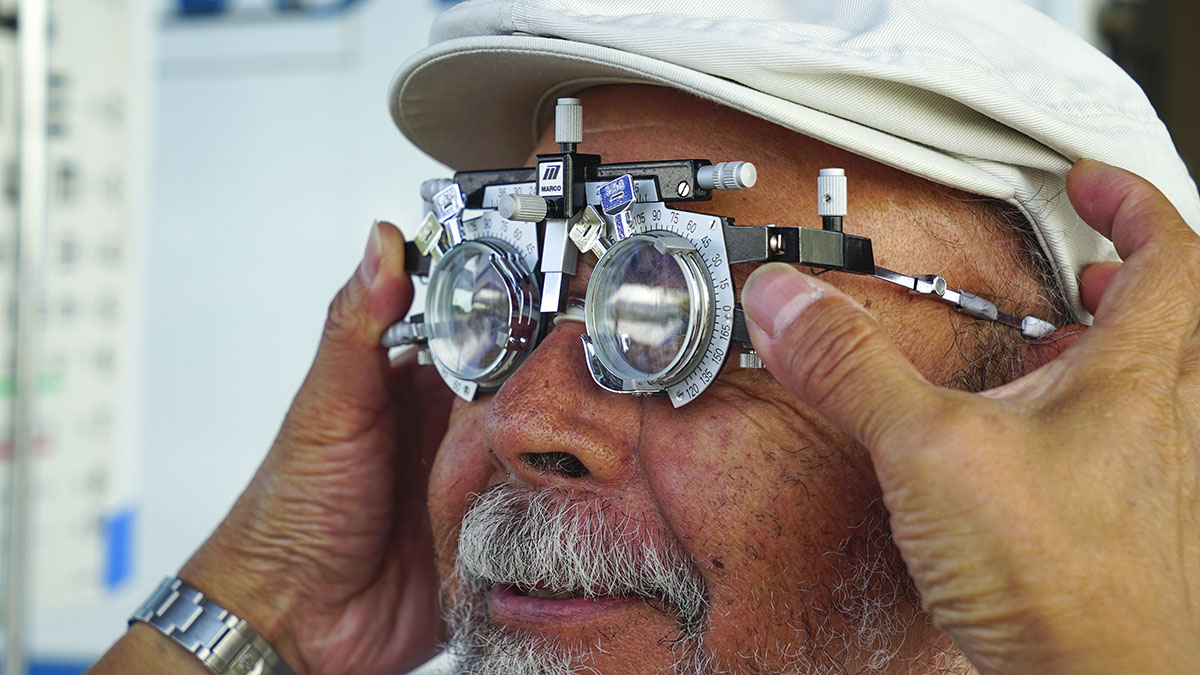
Buddhist Global Relief was founded by the American monk, scholar, and activist Bhikkhu Bodhi. “Buddhist Global Relief is driven by a conviction in the power of goodness,” he says. “It’s goodness that gives meaning and value to our lives, as well as a conviction to create bonds of human solidarity.”
The inspiration for Buddhist Global Relief was actually an article that Bhikkhu Bodhi wrote for Buddhadharma, the quarterly journal published by Lion’s Roar.
“For years,” he remembers, “I’d wanted to do something to express compassion in action. To translate the high ideals of Buddhism into some type of activity that would be directly beneficial to other human beings.”
So in 2007 he published an article in Buddhadharma that challenged Buddhists to advocate for justice. “We Western Buddhists,” he wrote, “tend to dwell in a cognitive space that defines the first noble truth largely against the background of our middle-class lifestyles: as the gnawing of discontent; the ennui of over-satiation; the pain of unfulfilling relationships; or, with a bow to Buddhist theory, as bondage to the round of rebirths. Too often, I feel, our focus on these aspects of dukkha has made us oblivious to the vast, catastrophic suffering that daily overwhelms three-fourths of the world’s population.”
“When I published the article, I had no intention of forming any kind of organization,” says Bhikkhu Bodhi. But members of his community were inspired to take action and establish a relief organization to address the challenges he’d outlined. This marked the start of Buddhist Global Relief (BGR).
After raising some money, the nonprofit organization initiated three starter projects: delivering meals to poor hospital patients in Vietnam, offering livelihood training to women in Sri Lanka, and partnering with Save the Children to provide disaster relief to communities affected by a cyclone in Myanmar.
News about BGR began to spread and pledges rolled in. Today, BGR supports thirty-five initiatives around the world that address four areas of need: direct food aid, the education of girls and women, right livelihood opportunities for women, and ecologically sustainable agriculture.
When a catastrophic earthquake hit Haiti in 2010, many children lost their parents, which meant they also lost access to food. BGR partnered with an organization to provide free meals to children. “Children walk miles every day to get in line to get food,” Bodhi says. “For many of them, it’s their only meal of the day.” BGR also helped build and fund a school there.
When girls in Cambodia reach age thirteen or fourteen, their families pressure them to drop out of school to work. To prevent this, BGR has partnered with Lotus Outreach on a long-running project called GATE (Girls Access to Education). Their method is to provide families with rice if they agree not to urge their daughters to leave school.
Approximately 90 percent of the girls in the program have completed the equivalent of high school, and more than one hundred girls have gone on to pursue postsecondary education. BGR funds the education of girls and women through programs in Nagpur, India, and in Himalayan communities in northern India and Bangladesh. In Cambodia, BGR has supported around twenty-five girls in their postsecondary studies by covering their transportation, tuition, and living costs.
By partnering with the Bodhicitta Foundation, founded by Australian Buddhist nun Ayya Yeshe, BGR provides livelihood training to women. This program trains women to become tailors or beauticians or to enter the field of information technology. BGR’s similar program in Cameroon provides practical vocational training for single mothers and marginalized women. There, more than 340 women have been trained in hairdressing, cosmetology, or sewing.
Finally, in the area of supporting sustainable agriculture, BGR partners with organizations like Oxfam to sponsor sustainable rice cultivation techniques that result in larger harvest yields and lower chemical outputs.
“It’s not enough just to be content with developing love and compassion as inward qualities,” concludes Bhikkhu Bodhi. “We also have to be able to transform these inner states into practical actions that bring real relief to the suffering of other living beings.”
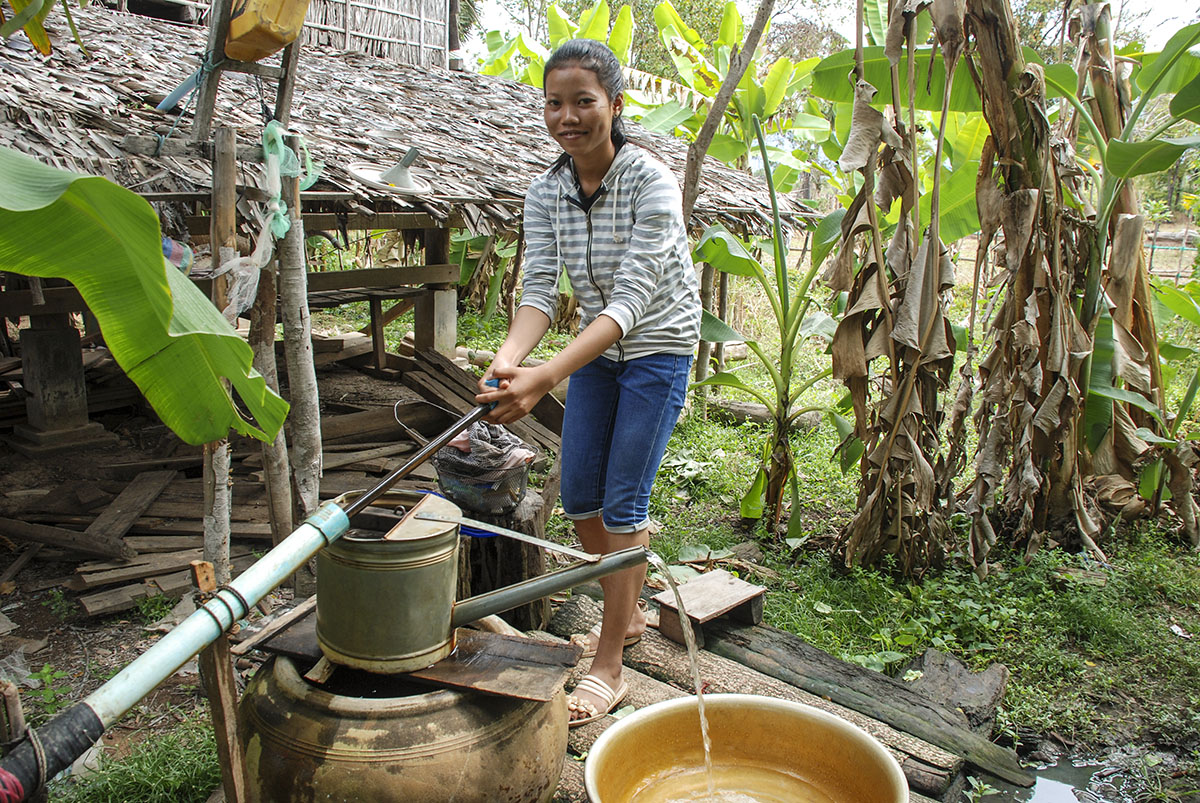
Sacrifice one cappuccino,” Tibetan teacher Dzongsar Khyentse Rinpoche advises people. “Spend that money on changing a girl’s whole life. This is not a metaphor. This is a reality.”
Seeing how such small sums of money could save children’s lives, Dzongsar Khyentse Rinpoche started Lotus Outreach International in 1993. Initially, it began as a scholarship program for students enrolled in primary and secondary education at his monastery in Himachal Pradesh, India. From there, he slowly expanded the depth, reach, and number of programs.
Lotus Outreach is now a nonprofit organization dedicated to empowering women and children in poverty by providing them with education, training, and health care. A website video describes its mission this way: “An eight-year-old girl sold by her own mother to European pedophiles. A young untouchable boy working in a stone quarry in southern India. A woman forced to work as a prostitute in Cambodia’s red light districts in order to feed her small children. These are the people served by Lotus Outreach International.”
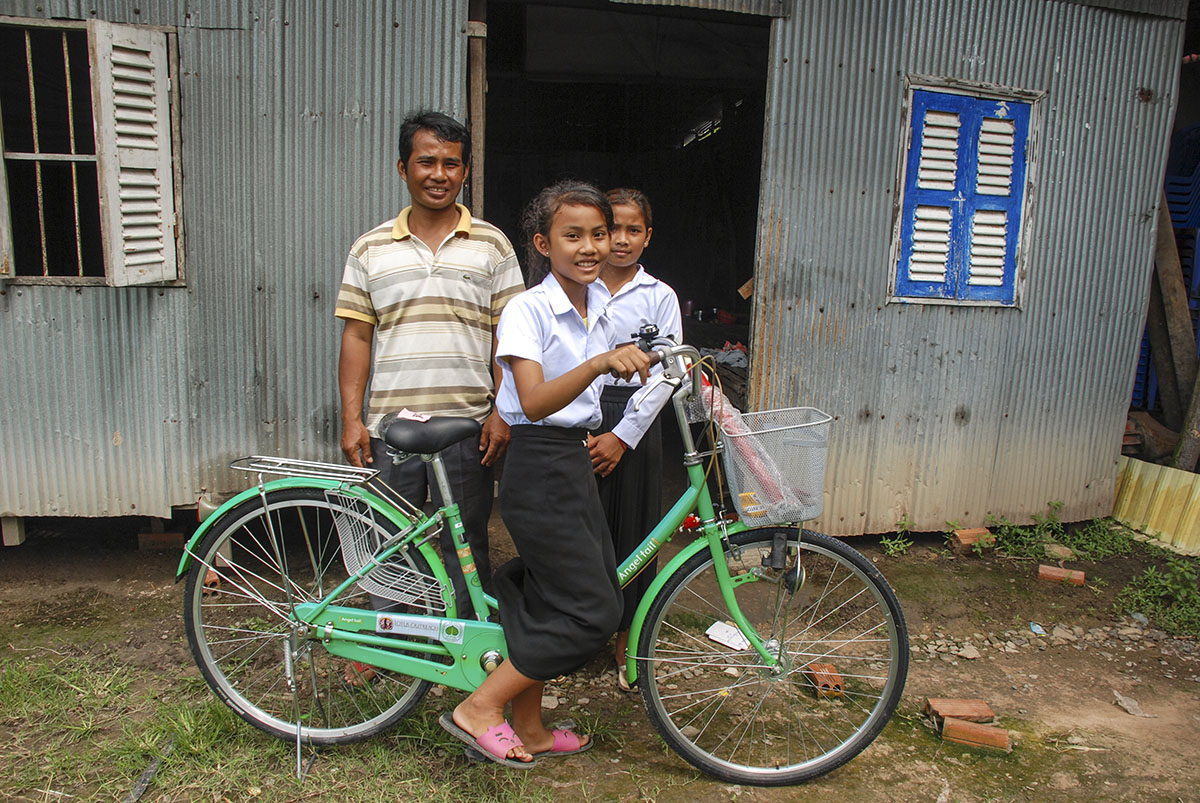
With affiliates in six countries and NGO partners in India and Cambodia, Lotus Outreach runs programs that foster sustainable change in communities by serving the urgent needs of the most vulnerable. Educating low-income and poverty-stricken children, especially girls, allows them to hone skills that could positively impact their entire family and village.
“In Buddhism, we recognize that everyone is worthy as a human being,” says Patty Waltcher, president of Lotus Outreach. “While compassion is one of the main tenets of Buddhism, we really feel that our work goes beyond Buddhism—it’s a basic human response to suffering.”
Today, the organization is a global nonprofit that works mostly in India and Cambodia, and is largely made up of volunteers. “One thing that nonprofits try to achieve is spending more on their programs and less on other things,” says Glenn Fawcett, the executive director. “We run very lean so that we can invest in more women and girls, which is proven to have a high social and economic impact.”
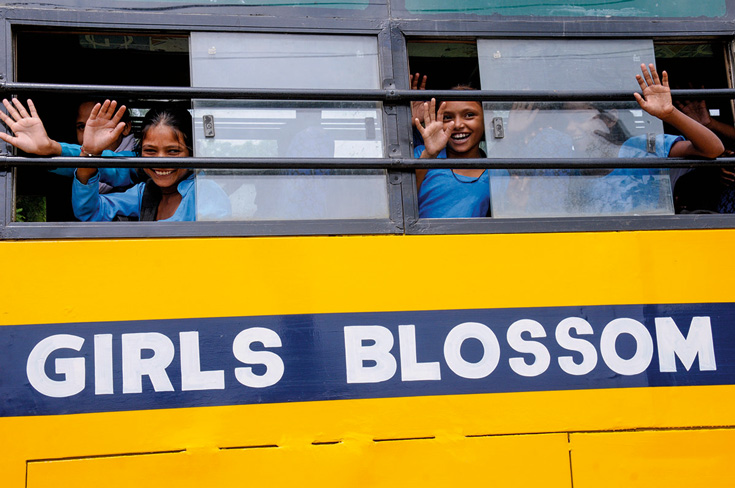
All of Lotus Outreach’s programs work in concert to be of maximum benefit. For example, GATE is complemented by their Blossom Bus and Lotus Petal programs. GATE, which receives support from Buddhist Global Relief, covers tuition costs and provides families with food so that girls can focus on their studies. Blossom Bus provides daily transportation to school for almost seven hundred girls, and Lotus Pedals provides 3,100 students with heavy terrain bicycles.
Lotus Outreach is also running a program to keep children safe while their parents are away at work from morning until evening. This after-school program both keeps children enrolled in school and provides evening classes to ensure they are caught up in their studies.
Lotus Outreach focuses primarily on the empowerment of girls and women because they are often the most vulnerable in low-income countries to becoming victims of discrimination and exploitation. To combat this, Fawcett says they empower girls and women through a combination of education, training, and care.
One young woman, Phach Meas, grew up in an exceptionally poor family. Her heart was set on going to school, even though her family couldn’t afford books or stationery. To help her with her studies, Meas’ father fashioned muddy chalk from river clay and a crude chalkboard from a piece of lumber. Lotus Outreach helped Meas attend high school, followed by a baking program. Today, she is a trained pastry chef and earns a sustainable living wage.
So far, Lotus Outreach has provided almost 1,500 girls with high school scholarships, 350 university and college scholarships, and more than four hundred thousand kilograms of rice to feed their families.
